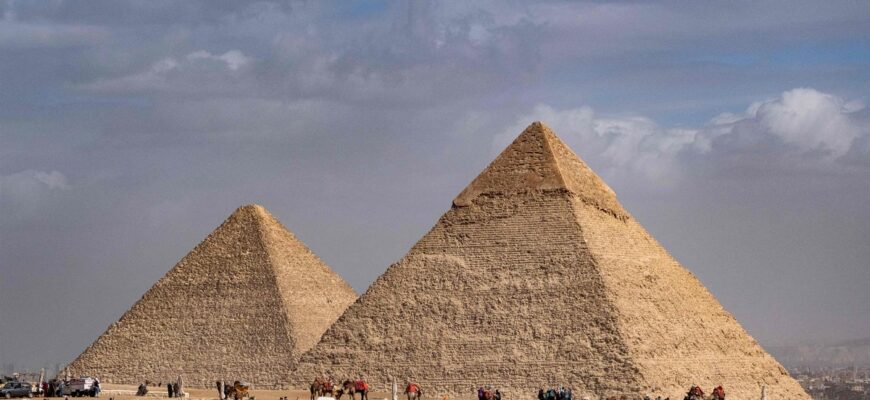A persistent image etched in popular culture is that the monumental pyramids of Egypt were constructed by vast numbers of enslaved people. This dramatic narrative, often fueled by cinematic portrayals, suggests forced labor under brutal conditions was the engine behind these ancient wonders. However, recent archaeological findings, championed by renowned Egyptologist and former Egyptian Minister of Antiquities, Dr. Zahi Hawass, present a significantly different picture – one of skilled craftsmanship and organized labor.
Dr. Hawass recently shed light on these discoveries during an appearance on the Matt Beall Limitless podcast. His team`s extensive work near the Great Pyramid of Giza has unearthed crucial evidence that provides a more nuanced understanding of the workforce behind its construction, dating back to the 13th century BCE.
Key to this revised perspective are burial sites located just south of the pyramid itself. These aren`t the anonymous, mass graves one might associate with a population of slaves. Instead, these are the tombs of the very people who built the pyramid. The discovery of these burial grounds, particularly their proximity to the pharaoh`s grand monument, serves as compelling evidence against the slave narrative. As Dr. Hawass pointedly noted, “If they were slaves, they would never have been buried in the shadow of the pyramids.” Burial in such a privileged location indicates a status far above that of forced servitude.
Further reinforcing this view are the artifacts and inscriptions found within these tombs. Among the discoveries were statues depicting workers engaged in the tasks of construction, specifically hauling stones. More significantly, inscriptions carved onto these statues and tomb walls bear hieroglyphs that reveal the titles and organization of the workforce. Titles such as “Overseer of the Pyramid Side” and “Craftsman” have been identified among a total of 21 different hieroglyphic inscriptions. These titles point towards a structured, specialized workforce with clear roles and supervision, typical of skilled labor rather than a homogenous group of enslaved individuals.
Dr. Hawass elaborated on the organizational structure inferred from the findings. He described the laborers working in distinct teams, each with specific responsibilities. Some teams were dedicated to cutting the massive stones, others focused on shaping them precisely, while yet others were responsible for the monumental task of transporting the materials. This transport, according to the expert, was achieved using wooden sleds dragged across the sand, a technique that required coordination and skill rather than brute, unmanaged force.
The daily life of these builders also appears far from the relentless suffering often imagined. Dr. Hawass stated that the construction workers labored continuously but were afforded a day off every ten days. This structured work schedule, including regular breaks, further supports the notion of a managed, valued labor force.
The Great Pyramid of Giza, the focus of these revelations, stands as the largest of the Egyptian pyramids and a testament to the architectural prowess of Ancient Egypt. It is the sole remaining structure of the original Seven Wonders of the Ancient World and the oldest among them, estimated to be around 4500 years old. Understanding *who* built it and *how* provides crucial insight not just into its construction, but into the society that was capable of such an extraordinary feat. The emerging picture suggests a society that could mobilize and manage a large body of skilled laborers, perhaps driven by religious duty or communal pride, to achieve monumental goals, rather than relying solely on the widespread use of chattel slavery for its grandest project.








